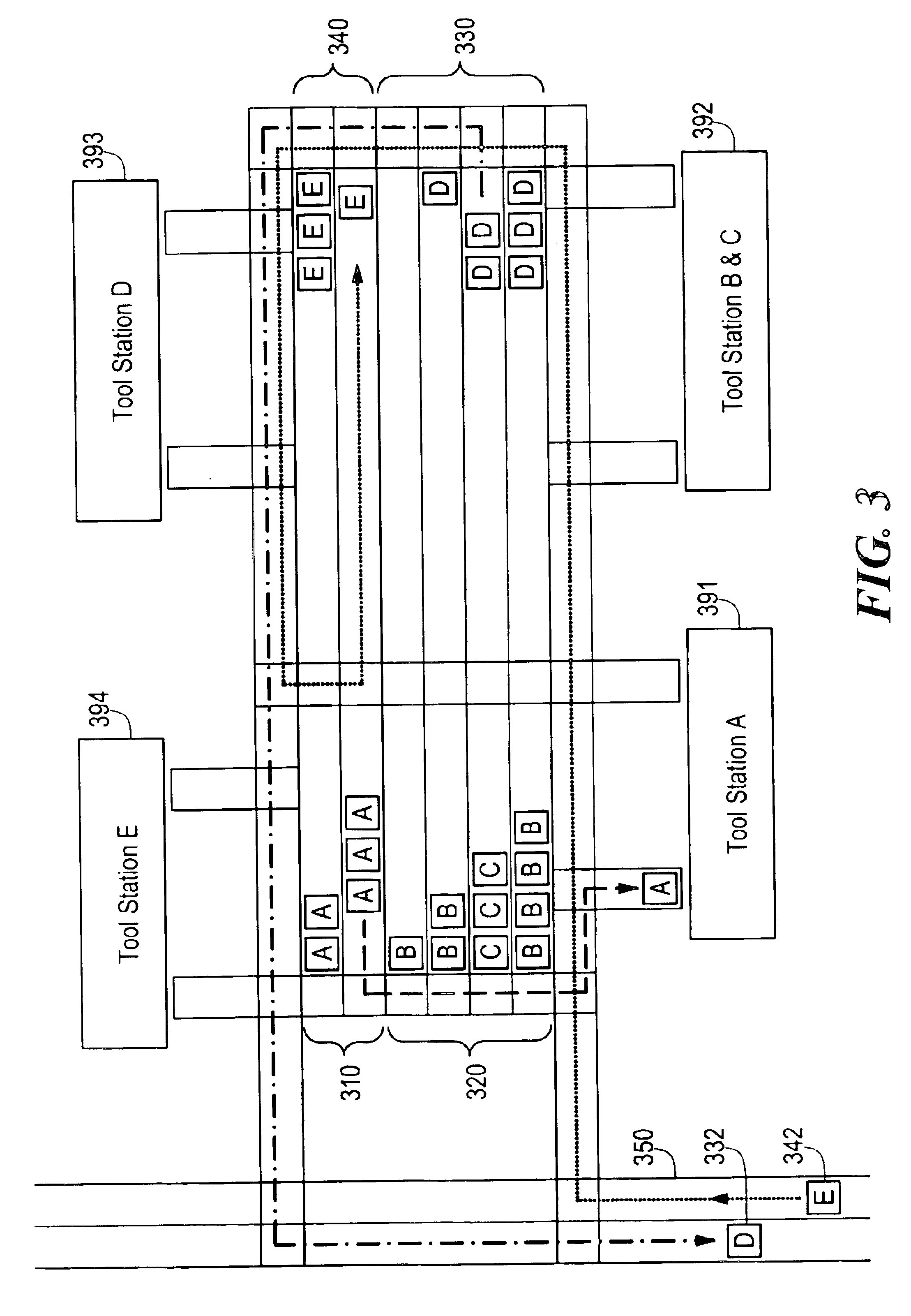Conveyorized storage and transportation system
a technology of conveying storage and transportation system, which is applied in the direction of charge manipulation, furniture, instruments, etc., can solve the problems of not being able to execute parallel workpiece manipulations by stocker robots, unable to accept the conveying method of transportation in these industries, and unable to achieve single workpiece manipulation limitations, etc., to achieve convenient configuration
- Summary
- Abstract
- Description
- Claims
- Application Information
AI Technical Summary
Benefits of technology
Problems solved by technology
Method used
Image
Examples
Embodiment Construction
The conveyorized storage and transport system according to the embodiments of the present invention may be used in any type of processing industry requiring storage for maintaining inventories at multiple processing stations. The manufacture of semiconductor devices is one example of an industry that is particularly suited for the features provided by the storage and transport system according to the embodiments of the present invention. In the illustrations, various embodiments of the presently disclosed storage and transport system are referred to as a “field stocker.”
Carriers conveyed by a clean-environment conveyor system may be pallets carrying one or more individual work-pieces. Alternatively, the conveyor elements may transport the work-pieces themselves without the need for carriers. In a semiconductor manufacturing process, substrates are usually carried in a transport carrier, while in flat panel manufacturing, the work-pieces may ride in carriers or directly on the convey...
PUM
 Login to View More
Login to View More Abstract
Description
Claims
Application Information
 Login to View More
Login to View More - R&D
- Intellectual Property
- Life Sciences
- Materials
- Tech Scout
- Unparalleled Data Quality
- Higher Quality Content
- 60% Fewer Hallucinations
Browse by: Latest US Patents, China's latest patents, Technical Efficacy Thesaurus, Application Domain, Technology Topic, Popular Technical Reports.
© 2025 PatSnap. All rights reserved.Legal|Privacy policy|Modern Slavery Act Transparency Statement|Sitemap|About US| Contact US: help@patsnap.com



